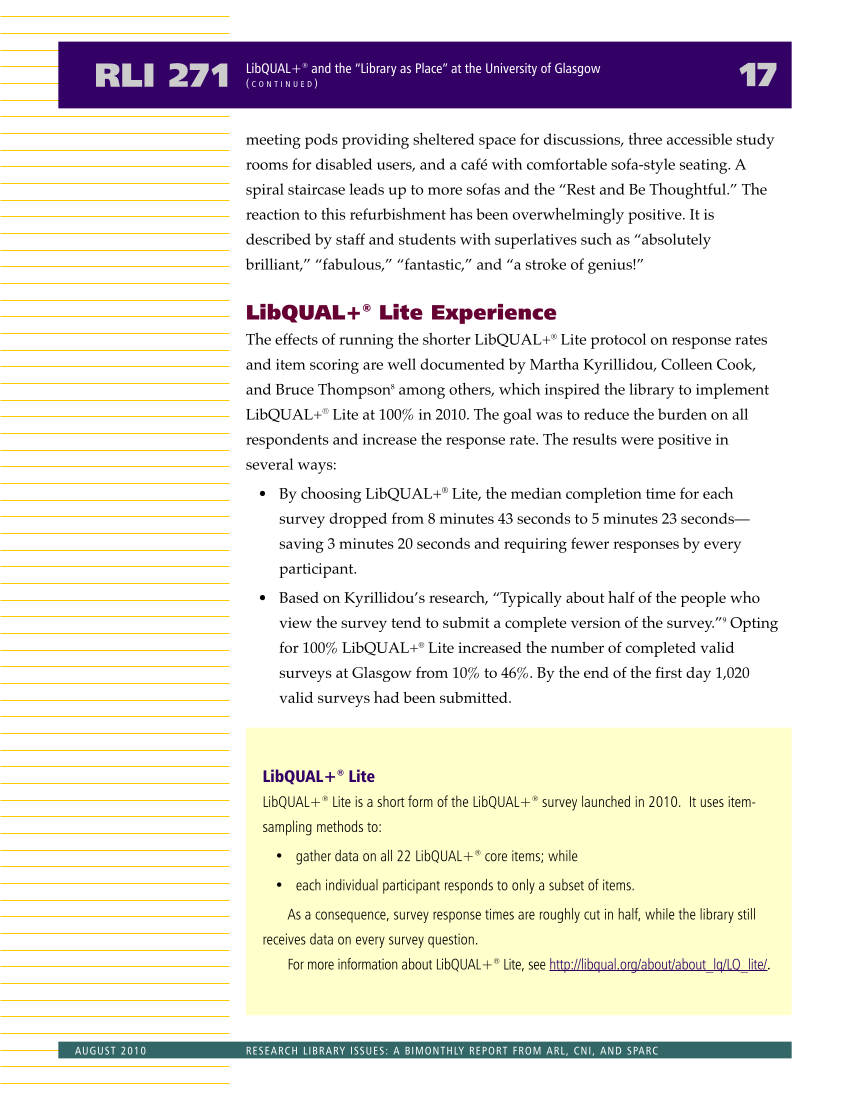meeting pods providing sheltered space for discussions, three accessible study rooms for disabled users, and a café with comfortable sofa-style seating. A spiral staircase leads up to more sofas and the “Rest and Be Thoughtful.” The reaction to this refurbishment has been overwhelmingly positive. It is described by staff and students with superlatives such as “absolutely brilliant,” “fabulous,” “fantastic,” and “a stroke of genius!” LibQUAL+® Lite Experience The effects of running the shorter LibQUAL+® Lite protocol on response rates and item scoring are well documented by Martha Kyrillidou, Colleen Cook, and Bruce Thompson8 among others, which inspired the library to implement LibQUAL+® Lite at 100% in 2010. The goal was to reduce the burden on all respondents and increase the response rate. The results were positive in several ways: • By choosing LibQUAL+® Lite, the median completion time for each survey dropped from 8 minutes 43 seconds to 5 minutes 23 seconds— saving 3 minutes 20 seconds and requiring fewer responses by every participant. • Based on Kyrillidou’s research, “Typically about half of the people who view the survey tend to submit a complete version of the survey.”9 Opting for 100% LibQUAL+® Lite increased the number of completed valid surveys at Glasgow from 10% to 46%. By the end of the first day 1,020 valid surveys had been submitted. RLI 271 17 LibQUAL+® and the “Library as Place” at the University of Glasgow ( C O N T I N U E D ) AUGUST 2010 RESEARCH LIBRARY ISSUES: A BIMONTHLY REPORT FROM ARL, CNI, AND SPARC LibQUAL+® Lite LibQUAL+® Lite is a short form of the LibQUAL+® survey launched in 2010. It uses item- sampling methods to: • gather data on all 22 LibQUAL+® core items while • each individual participant responds to only a subset of items. As a consequence, survey response times are roughly cut in half, while the library still receives data on every survey question. For more information about LibQUAL+® Lite, see http://libqual.org/about/about_lq/LQ_lite/.



















































